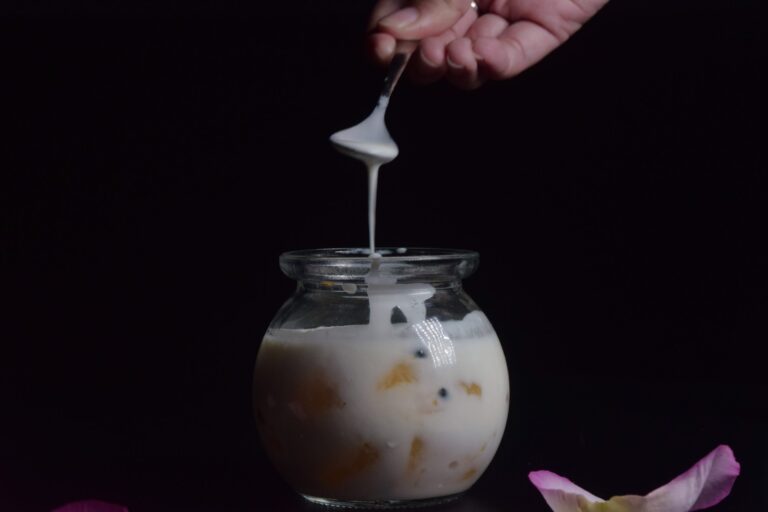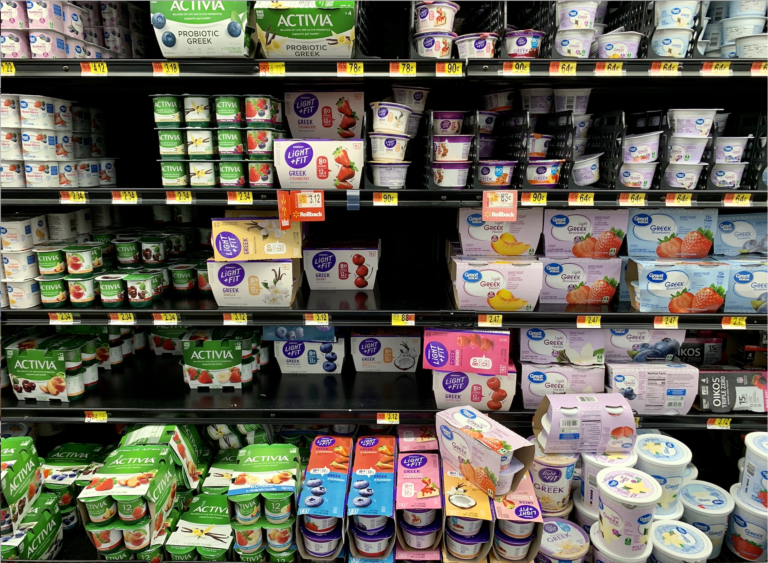What's that liquid on top of my yogurt?
And how does it mysteriously appear?


I’m sure we’ve all been super excited to snack on our favorite yogurt, only to open the package and be greeted by this unappealing liquid.
Even worse, is when the yellowish fluid shoots out at you staining your shirt for the rest of the day.
So, where the heck does this liquid even come from?!
To understand this, you have to do a deep dive into the microstructure of yogurt (and yes, foods have super interesting structures)!
Yogurt is a food gel
Yogurt has a specialized structure called a gel, which means it contains an extensive network capable of capturing and entrapping liquid. Many different types of foods, from gummy bears to jams and jellies, are also gels.
In yogurt, proteins named caseins are responsible for setting up a network. These proteins come together to form clusters and become so entangled with one another that they create a 3-dimensional matrix with void spaces. And within these pores the casein entraps any liquid and fat nearby.
As the casein network continues to grow in size, it eventually becomes so strong that the food begins to act like a solid. This is what we call yogurt.
The casein network is strong, but not that strong



Although the protein network is able to hold in large amounts of liquid, it cannot stand up to much physical abuse.
In grocery stores, employees might make simple mistakes like dropping containers, tipping them sideways, or stacking them upside down. These actions are incredibly disruptive to the gel network. The agitation starts to collapse pores and liquid is released.
The same phenomenon occurs in multi-serving containers where you might scoop out one serving at a time.
Have you ever taken out the first serving only to come back a day later with a pool of liquid atop the yogurt?
The action of the spoon scraping out some of the yogurt was enough to disrupt the casein network and release liquid. Again, you are causing the gel to collapse.
In food science, we use the term syneresis to describe the expulsion of liquid from a gel.
You better eat that liquid!



If you’re a muscle builder, you’d likely recognize the name of this expelled liquid— whey.
That’s because the watery phase dissolves many nutrients like whey protein, sugars, and salts.
That’s right!
The unattractive, ropy fluid that pools on top of your yogurt contains a small amount of one of the most valuable proteins. Just check out the protein powder section at your local grocery store if you don’t believe me. Dried whey powders command a steep price.
My advice is to stir that liquid back into the yogurt. No need to toss out and waste that liquid whey.
So, as it turns out, that yellow fluid was there the whole time. It’s just usually entrapped within the protein network, so we never end up noticing it.
And although the fluid is mostly water, it does contain some valuable nutrients like whey protein and calcium. Like I said, stir it back in! No more draining it out!

